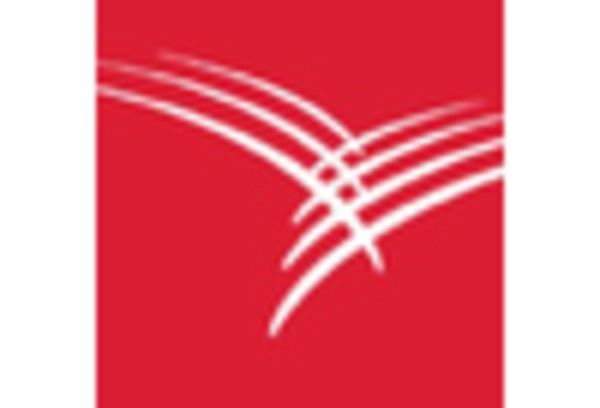Rising Healthcare Expenditure
The increase in healthcare expenditure across various regions is a notable driver of the Angina Pectoris Treatment Market. As governments and private sectors allocate more resources to healthcare, there is a corresponding rise in funding for cardiovascular research and treatment initiatives. This trend is particularly evident in countries with aging populations, where healthcare budgets are being adjusted to accommodate the growing demand for chronic disease management. Enhanced funding allows for the development of new treatment modalities and the expansion of existing healthcare services, thereby improving access to angina treatments. Furthermore, as patients are willing to invest in their health, the market for angina therapies is likely to expand, reflecting the increasing prioritization of cardiovascular health within healthcare systems. This dynamic is expected to drive the Angina Pectoris Treatment Market forward.
Advancements in Medical Technology
Technological advancements in medical devices and treatment methodologies are significantly influencing the Angina Pectoris Treatment Market. Innovations such as drug-eluting stents, advanced imaging techniques, and minimally invasive surgical procedures have transformed the landscape of cardiovascular care. These advancements not only enhance the efficacy of treatments but also improve patient outcomes and reduce recovery times. For instance, the introduction of new pharmacological agents that target specific pathways in angina management has shown promising results in clinical trials. As these technologies continue to evolve, they are expected to drive the market further by providing healthcare professionals with more effective tools to manage angina pectoris. The integration of artificial intelligence and machine learning in diagnostics and treatment planning also holds potential for optimizing patient care within the Angina Pectoris Treatment Market.
Increasing Awareness and Education
There is a growing emphasis on public awareness and education regarding cardiovascular health, which serves as a crucial driver for the Angina Pectoris Treatment Market. Health campaigns aimed at educating the population about the symptoms, risk factors, and management of angina pectoris are becoming more prevalent. This heightened awareness encourages individuals to seek medical attention sooner, leading to earlier diagnosis and treatment. Moreover, healthcare providers are increasingly focusing on patient education to empower individuals in managing their conditions effectively. As a result, the demand for angina treatments is likely to rise, as more patients become informed about available options. This trend is further supported by the increasing availability of resources and support networks for patients, which collectively contribute to the growth of the Angina Pectoris Treatment Market.
Regulatory Support for Innovative Therapies
Regulatory bodies are increasingly supportive of the development and approval of innovative therapies for angina pectoris, which is a significant driver for the Angina Pectoris Treatment Market. Streamlined approval processes and incentives for research and development are encouraging pharmaceutical companies to invest in new treatment options. This regulatory environment fosters innovation, allowing for the introduction of novel drugs and therapies that can address unmet medical needs in angina management. Additionally, the emphasis on patient-centric approaches in regulatory frameworks is likely to enhance the focus on developing treatments that improve quality of life for patients. As a result, the Angina Pectoris Treatment Market is poised for growth, as new therapies enter the market and expand treatment options for healthcare providers.
Rising Prevalence of Cardiovascular Diseases
The increasing incidence of cardiovascular diseases, including angina pectoris, is a primary driver of the Angina Pectoris Treatment Market. As lifestyle-related factors such as obesity, sedentary behavior, and unhealthy diets become more prevalent, the number of individuals suffering from angina is expected to rise. According to recent statistics, cardiovascular diseases account for a significant portion of global mortality, prompting healthcare systems to prioritize effective treatment options. This growing patient population necessitates the development and availability of innovative therapies, thereby stimulating market growth. Furthermore, the aging population is particularly susceptible to cardiovascular conditions, which further amplifies the demand for angina treatments. Consequently, the Angina Pectoris Treatment Market is likely to experience substantial expansion as healthcare providers seek to address this pressing public health challenge.


















Leave a Comment